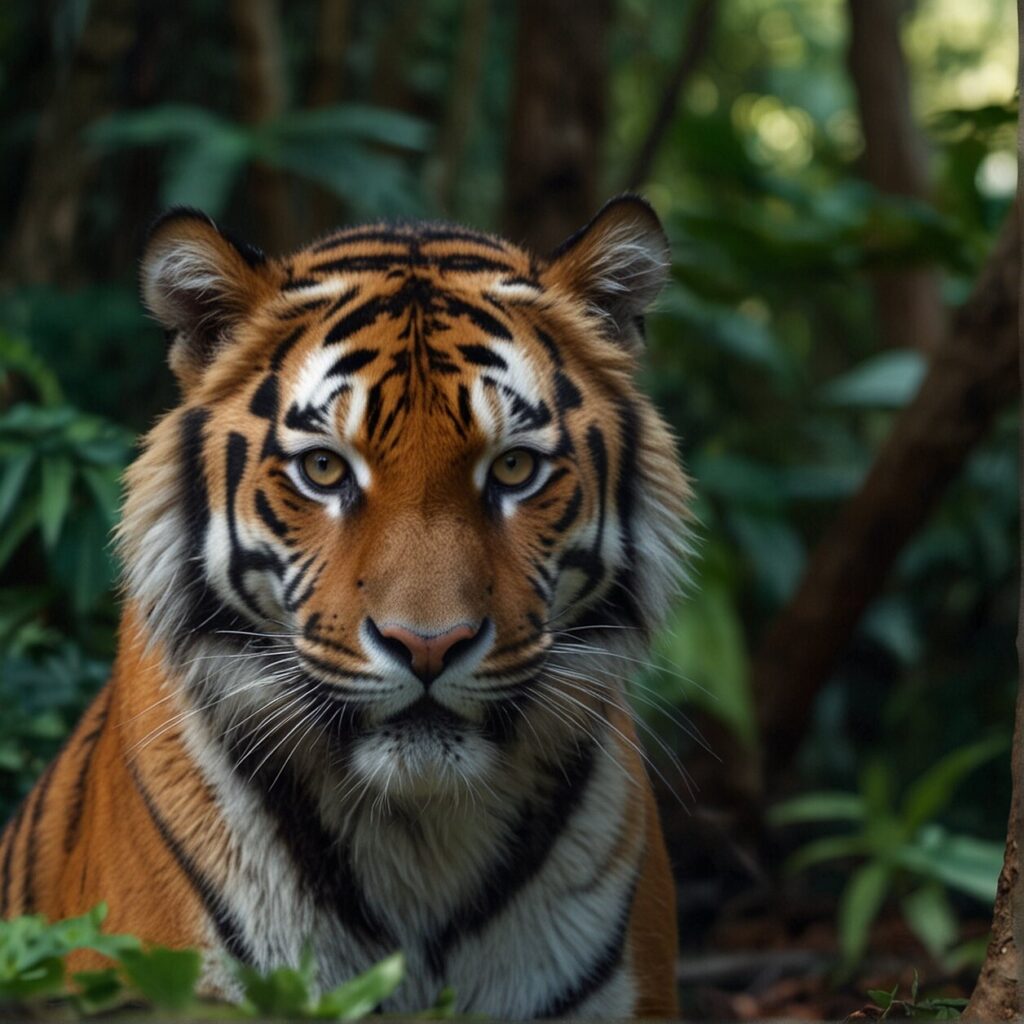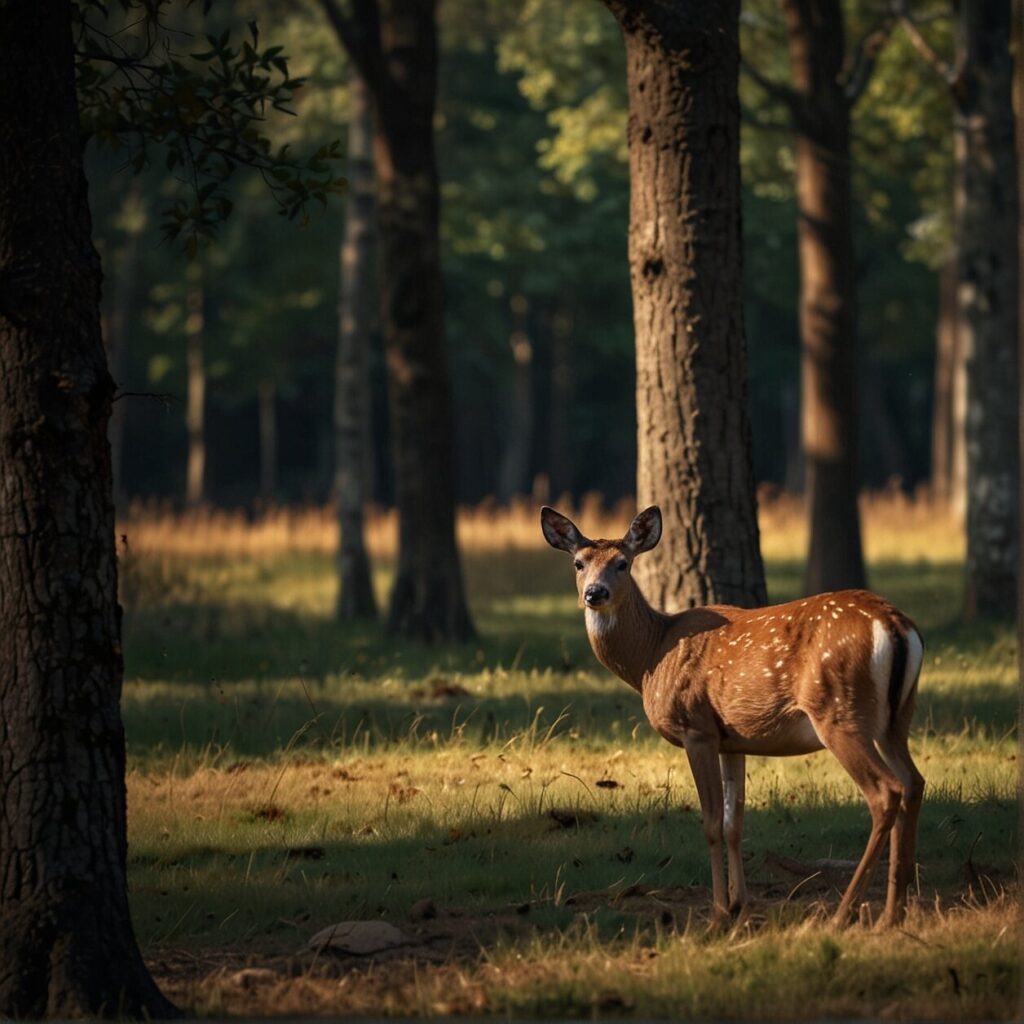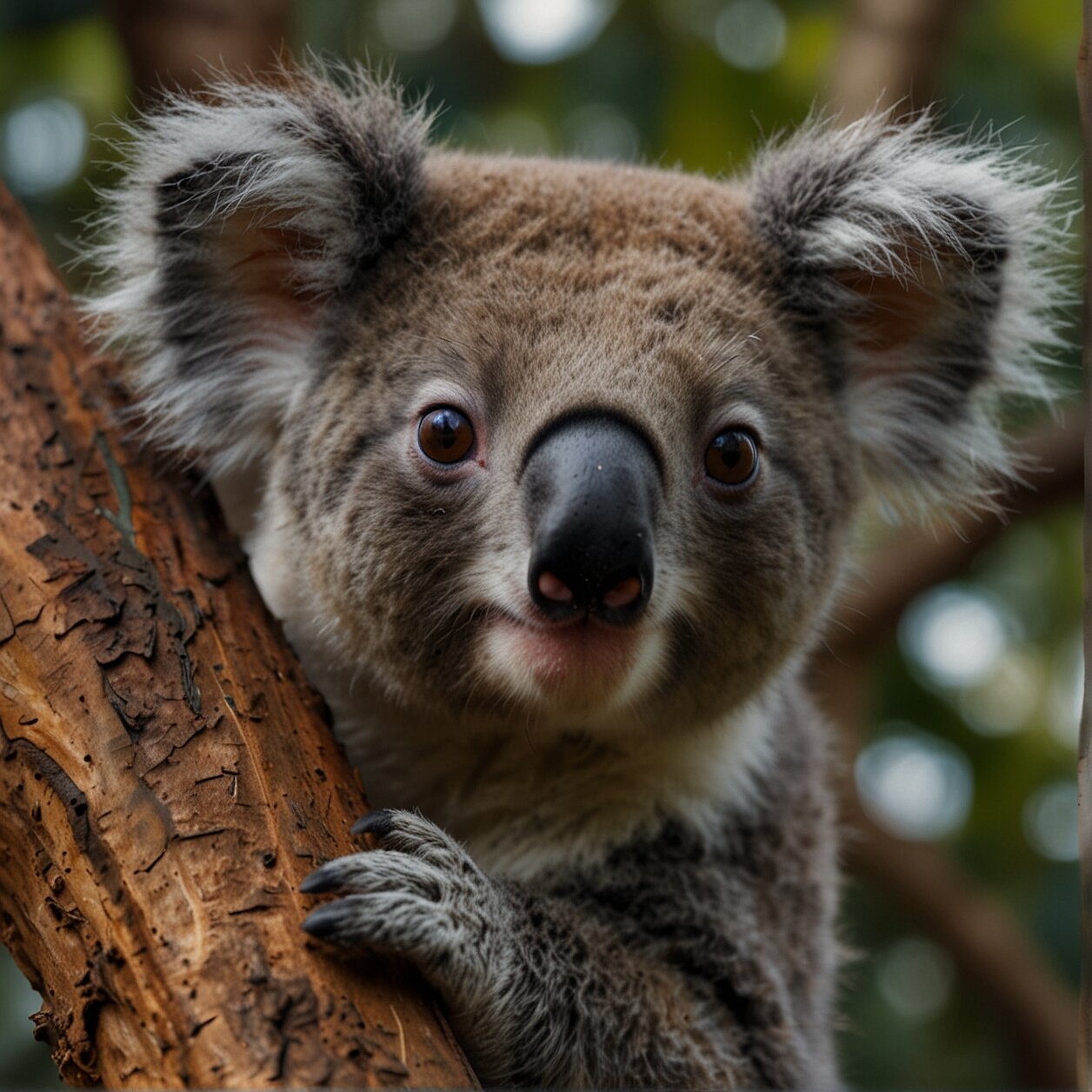Responsible Wildlife Encounters: A Balanced Approach
Imagine yourself hiking through a mesmerizing forest, the ground crunching softly beneath your feet; or maybe you’re sailing on a vivid turquoise sea, the rhythmic lull of the waves coaxing you gently into the deepest tranquility. Suddenly, you find yourself face-to-face with a majestic creature. Experiencing the pulse of nature at its rawest brings unforgettable memories and heartfelt connections. But how do we share our planet respectfully with all these beautiful beings?
Traveling offers a unique opportunity to witness wildlife in their natural habitats. But as stewards of nature, we carry a huge responsibility. It is now up to us to ensure our interactions with wildlife are safe, respectful, and contribute positively to their preservation. In this article, we are going to guide you on this thrilling path towards responsible wildlife encounters—let’s delve in!
Exploring the wilderness and interacting with wildlife should revolve around observing and appreciating, not disturbing and endangering. Let’s travel consciously, giving the respect and space wildlife deserves, and securing a safe environment for every inhabitant of our planet, including ourselves.
Understanding the Importance of Wildlife Conservation
Think about your favorite animal. Now, consider the possibility that future generations might not be able to see that animal outside of books or the internet. Unfortunately, this is the reality for numerous wildlife species around the world.
Wildlife conservation aims to safeguard these species from extinction and preserve their natural habitats. Not only does this create a healthier planet overall, but it also allows us to continue to study and admire the spectacular creatures that inhabit our world.
The importance of wildlife conservation goes beyond the individual species themselves. When we protect an endangered species, we also conserve the many other species that share its ecosystem. It’s a chain reaction of positive impact, where the protection of one species can help sustain an entire ecosystem.
Moreover, wildlife plays a pivotal role in maintaining a balance within ecosystems. Each animal has a specific job and responsibility – from pollination to soil aeration, from seed dispersal to controlling the population of other species. When wildlife thrives in its natural habitat, the environment thrives overall.
Conservation is also an economic advantage, especially for countries like Tanzania and Costa Rica – where wildlife tourism brings in significant income that supports both local communities and the national economy, all while preserving nature.
However, the success of wildlife conservation largely depends on society’s ability to interact responsibly with wildlife, be it while exploring a national park, visiting a wildlife sanctuary, or simply through their lifestyle choices. We all have a role to play to ensure that these magnificent creatures continue to exist for generations to come.
Remember, by treating the world’s wildlife with respect, we are indeed protecting the rich heritage of our planet. Interacting responsibly with nature’s creatures is not just a hobby, but a way of life to be taken seriously and passed on to future generations.

Understanding Animal Behaviors: A Key to Safe Interactions
Comprehending animal behaviors is not only enthralling, but it can also be the deciding factor between a safe encounter and an unfortunate incident. Each species has its own set of signals, actions, and reactions that, like a language, can be learned and understood.
Learning about animal behaviors before your journey helps you anticipate potential situations and make informed decisions in response. Want to avoid a bear conflict? Recognize the warning signs such as standing on their hind legs, clacking their teeth, or huffing. It’s not an invitation to play, rather it’s a plea to retreat.
Feeding wild animals might seem harmless or even beneficial, but it actually promotes dependency on humans. This disruption can lead to aggressive behaviors as animals start associating humans with food, something that’s neither great for us nor them.
The bottom line? Observe and value wildlife from a distance, keeping interactions to an absolute minimum. These practices ensure both your safety and the welfare of the animals, contributing to the respectful and ethical treatment of our wild counterparts.
Striking a Balance: Safety and Respect in Wildlife Encounters
Striking a balance between safety and respect during wildlife encounters is a fundamental aspect of responsible wildlife tourism. It requires you, as conscious travelers, to mindfully tune into nature and adopt a profound appreciation for wildlife. Understand this: any single act committed irresponsibly can disrupt the delicate balance of their natural habitat.
Keep a safe distance – wildlife isn’t here to perform for our amusement. They are wild beings living in their own environment. Be sure to maintain an appropriate distance from animals during encounters. This protects you, the wildlife, and the ecosystem at large. You wouldn’t want an animal to feel threatened by your presence, you’re a visitor in their home after all.
Avoid unnatural interactions – interactions like feeding or touching wildlife may seem like a fun idea, but they can have detrimental effects. Humans food is not meant for them and you can potentially introduce diseases or disrupt their feeding patterns.
Choose responsible tour operators – many travel organizations endorse wildlife tourism. However, not all prioritize animal welfare and habitat preservation. Hence, make it a point to perform your due diligence before partnering with any tour operator.
Remember, your travels are an opportunity to witness the raw, true beauty of the animal kingdom. But this must never come at the cost of the welfare of these magnificent creatures, or the peace and equilibrium of their home. Let’s keep it wild, let’s keep it respectful!

Respectful Photography: Capturing Wildlife Without Disturbance
Capturing the beauty of wildlife through a lens can often be a thrilling experience. However, it’s also essential to ensure your photography practices are respectful and unobtrusive. It’s not just about that perfect shot, but also about prioritizing the welfare of the animals you are photographing.
First and foremost, use a zoom lens to maintain a safe and respectful distance. This not only keeps you safe but also avoids distressing the animals. Moreover, it lets the wildlife continue their natural behavior, leading to more authentic photographs. Using a camera with a silent shutter can also help minimize disturbances.
It’s crucial to avoid using flash, as it can startle and harm animals, particularly nocturnal creatures or those with sensitive eyes. Aside from the potential harm, it may provoke aggressive behavior as a defense mechanism.
Avoid manipulating the natural environment for a better shot. It’s essential never to corner, chase, or provoke an animal to achieve a specific reaction. Such actions can cause unnecessary stress and potentially force wildlife into dangerous situations.
Don’t forget to be patient. Wildlife photography is as much about waiting for the right moment as it is about respect and understanding for the animals being photographed. The best images often come to those who wait.
Remember, the objective of wildlife photography should be to raise awareness about these amazing creatures and their habitats—not to disturb them. Prioritizing an ethical approach to wildlife photography shows respect, promotes conservation, and makes for genuinely impactful images that tell powerful stories.
Traveling Responsibly: Pre-trip Preparations for Wildlife Encounters
Embarking on a wildlife adventure requires mindful planning and preparation. You’re not merely packing a suitcase, you’re preparing to enter the habitats of various animals in an unobtrusive and respectful manner. Pre-trip preparations not only ensure a memorable experience, but they also help promote a culture of responsible wildlife tourism.
Prior to your journey, take the initiative to research your destinations and operators. Look for those that have a strong stance on animal welfare and are committed to wildlife conservation. This means avoiding wildlife centers that do not prioritize the well-being of their animals and instead, choosing responsible wildlife sanctuaries.
Also, look out for potential red flags. Unnatural interactions, such as feeding wildlife or participating in forced animal performances, are a clear indication of practices that harm animals. Instead, opt for experiences that allow animals to behave in their natural manner. Remember, you are stepping into their habitat, and respecting their space is crucial.
Do not stop at preliminary research; continue your education during your journey. When you arrive at your destination, engage with local guides and heed their advice. They possess extensive knowledge about the local wildlife and can help educate you on the best practices to ensure safety for both you and the animals.
Similarly, be mindful of the larger impact of your trip. This could translate into simple actions such as choosing vegan meals during your travel or ditching single-use plastic to help protect animal habitats. These small steps contribute towards sustainable tourism and make a significant difference in preserving wildlife.
As you go about your trip, share your experiences responsibly. Education is one of the most potent tools for change, and by sharing your experiences you can influence others to also engage in responsible wildlife tourism.
Remember, the ultimate goal of any wildlife encounter is to connect with nature and witness the beauty of the animal kingdom, without putting it in jeopardy. Your responsible actions today will ensure a richer, more balanced planet for future generations to experience and admire.
FAQ’S
Having covered some crucial aspects of interacting responsibly with wildlife during travel, you might still have some lingering questions. Our FAQ section aims to answer some of the most frequently asked questions related to this topic. Let’s dig a little deeper into the subject and unravel the queries you might have.
What are some tips for responsible wildlife encounters?
Engaging responsibly with wildlife begins with making informed choices. It’s vital to research and select tourism operators that prioritize animal welfare and sustainable practices. This helps you avoid contributing to harmful activities like captive wildlife entertainment and the high demand for potentially illegal animal products.
Keeping your distance is another key principle in ethical wildlife encounters. Approach animals with an utmost quietness and caution, ensuring you do not encroach into their personal space or natural habitats. Distancing is not only about your physical distance, it also includes abstaining from activities involving direct interaction with animals such as petting, feeding, or forcing them into actions for your amusement.
Lastly, one of the best ways to be a responsible traveler is to educate yourself and others. Learn about the animals you may encounter, the impact of human activity on their populations, and the importance of conserving their habitats. Remember to also share these insights intelligently and responsibly, without sensationalizing animal encounters or promoting harmful practices.
Being a responsible wildlife tourist demands a constant awareness and respect for the wildlife around us. It’s about knowing the potential consequences of your actions and always choosing the most respectful and least harmful way to enjoy nature’s spectacles.
How can I ensure safety while interacting with wildlife?
Ensuring safety while interacting with wildlife involves a few key principles. First and foremost, maintain a respectful distance. Close proximity to wildlife can stress the animals, disrupt their natural behaviors, and potentially provoke a dangerous reaction. Additionally, unexpected encounters can be alarming and dangerous for both you and the wildlife. Given this, it’s recommended to utilize binoculars, telescopes, or zoom lenses for observation and photography, enabling you to appreciate wildlife without intrusively invading their space.
Another significant factor in ensuring safety is avoiding unnatural interactions. Beware of activities and tourist attractions offering close encounters and non-voluntary interactions with wildlife, like elephant rides, tiger selfies, or swimming with dolphins. These are not only harmful to the animals but are often unsafe and unethical. Ensuring you support ethical wildlife tourism by only participating in responsible activities is a crucial part of safeguarding both your safety and the welfare of the wildlife. Companies like TripAdvisor have policies in place that ban such activities, and it’s your responsibility as a traveler to support this approach.
It’s also essential to never feed the wildlife. Feeding can habituate animals to humans, leading to changes in their feeding habits, increased dependence on human food, and making them more susceptible to harm. It can also pose a threat to human safety, as animals may become aggressive in seeking food.
Always do your research about the places and operators before you proceed with your adventure. Supporting responsible wildlife sanctuaries, and opting for guided walking or jeep safaris led by experienced guides, can provide a safer and more authentic wildlife experience. These guides understand the behavior of wildlife and ensure your safety while promoting the animals’ well-being.
Lastly, being conscious of your impact, educating yourself, and sharing your responsible experiences with others can help spread awareness about safe interactions with wildlife. This will not only keep you safe, but it will also contribute to the larger goal of wildlife conservation and ethical tourism.
Are there specific rules for interacting with different types of wildlife?
Yes, there absolutely are diverse rules for interacting with varying species of wildlife, mainly due to their unique behaviors, habits, and needs. It’s essential to be familiar with these protocols to ensure both your safety and the welfare of the animals.
One commonplace principle is maintaining a suitable distance. Never approach wildlife too closely, whether on land or underwater. Animals typically have a ‘comfort zone’, a space within which they feel secure. Invading this zone can induce stress, disrupt their natural behavior, or provoke aggressive defenses.
The principle of “Look, but don’t touch” applies to all wildlife encounters. Wildlife should be observed in their natural habitats without interference. For species such as dolphins, elephants, or tigers, avoid venues promoting unsafe or unnatural interactive activities such as riding, swimming, or petting. Instead, opt for venues that prioritize ethical observation from a respectful distance.
Feeding wildlife is usually a strict no-no. This practice can make animals dependent on humans for food, disrupt their feeding habits, and potentially lead to aggressive behaviour. Direct feeding by tourists can also cause nutritional problems and disrupt an animal’s ability to forage naturally.
Avoid purchasing products made from wildlife and contributing to the demand for artifacts, jewelry, or trinkets fashioned from wildlife parts. These items are often sold to tourists without them knowing that it’s harmful to the creatures, or the trades might be illegal.
Last but not least, follow the instructions of local guides. They are well-versed in the appropriate conduct, local customs, and potential risks surrounding wildlife encounters. Their advice is invaluable in ensuring you interact appropriately with wildlife during your travels.
Educating oneself and understanding the rules for each species is a step forward in becoming a responsible wildlife tourist. So refer to reliable resources, follow guidelines, and participate in ethical tourism for a wildlife experience that respects these magnificent creatures and their habitats.
How to behave if a wild animal approaches me?
If you find yourself in a situation where a wild animal approaches you, the first and foremost rule is to stay calm. Remember, you are the guest in their kingdom, and their reactions tend to mirror your behavior. So, any abrupt actions from your end can provoke a defensive response from them.
Avoid direct eye contact, which might be viewed as a threat by some species. Stand tall and make yourself appear larger. This often works in deterring smaller animals. But above all, stand your ground. Running away might trigger their predatory instincts, leading to a chase.
It’s also important that you don’t attempt to feed the animals. This not only disrupts their natural dietary habits but also makes them associate food with humans. Consequently, they may begin to approach other tourists, potentially leading to aggressive behaviors.
And remember, too, not to attempt to pet them. Their perception of touch is different from ours and reaching out can lead to unwanted reactions. In the case of monkeys, for example, your well-intended gestures can be misinterpreted, increasing the chances of you getting bitten.
In any circumstance, the key is to keep a respectful distance. It enables you to avoid accidental violations of their personal space, ensuring your safety and that of the wildlife you’re encountering.
If you’re at a loss for what to do, enlist the help of local guides or rangers. They are trained to handle such encounters and can help navigate them safely and responsibly.
Finally, capitalize on this exciting encounter by absorbing the experience and capturing memories in your mind rather than just through the lens of your camera. Preserve the magic of the wild and let these marvelous creatures continue their lives unaffected by your visit.
What are some common mistakes people make when interacting with wildlife?
One widespread error committed by wildlife enthusiasts is ignoring or being oblivious to the notion of personal space for wildlife. Just like humans, every species in the wild has its defined boundaries which should not be breached. While it’s exciting to see wildlife up close, maintaining a respectful distance is not only safe but also ethically right.
Another prevalent mistake is trying to feed the animals on your own. Although this might seem benign, essentially it disrupts their natural feeding patterns and can lead to dependency or aggressive behavior. It’s crucial to remember that they are wild creatures and their survival skills don’t require human interference.
Misinterpretation of animal behaviors can also lead to challenging situations, particularly with primates. It’s essential to educate oneself on the typical behaviors of the wildlife you expect to encounter on your trip to avoid misunderstandings that could potentially lead to harm.
Quite often, travelers inadvertently support activities detrimental to wildlife by participating in seemingly enjoyable experiences like riding elephants or taking selfies with exotic creatures. Most of these activities result in enormous distress to the animals and in most cases are exploitative in nature.
The thirst for unique memorabilia can lead to the purchase of trinkets made from wildlife parts. This benign act can indirectly contribute to the extinction of endangered creatures since the demand fuels illegal wildlife trade.
Finally, the lack of adequate research about the tour operators can result in supporting unethical establishments that don’t prioritize animal welfare. It’s strongly recommended to travel with responsible operators and visit sanctuaries that genuinely care for animal welfare.
Remember, as wildlife enthusiasts, once we understand and rectify these common mistakes, we can contribute significantly towards ethical wildlife tourism and conservation efforts through our travels.







